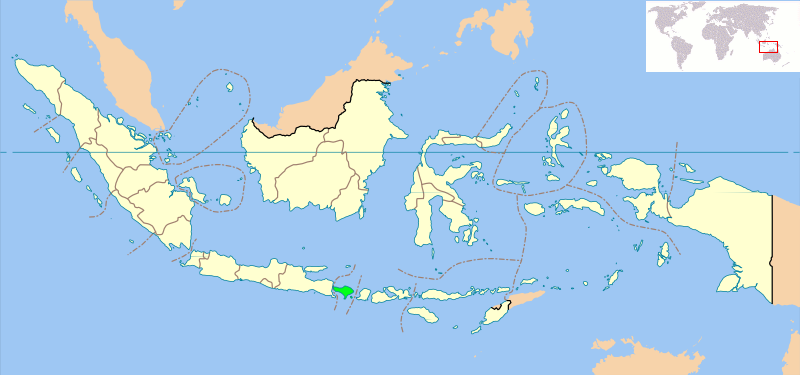Wayan Balik
The island of Bali, in Indonesia (the green island above), is home to about 4 million people, of which roughly 90% are ethnically Balinese. It is a tourist haven and, if you ever visit, you may find a lot of people named Wayan — both men and women. There’s a reason for that. The Balinese people do not name their children after their parents, grandparents, or cultural icons. The names are, instead, culturally mandated to reflect one thing, and one thing only: the child’s order of birth.
In the Balinese culture, “Wayan” is the typical name used for the first born child, male or female, of the family. The second born is typically “Made,” the third “Nyoman,” and the fourth “Ketut.” If a subsequent child is born, the order repeats itself, sometimes with the word “Balik” added, which means “again.” So “Wayan Balik” would be the fifth born.
The names stem from a caste system which dates back centuries. The farmer/rice grower class, called the Sudra, wanting to make sure that the oldest receives his or her birthright of land, adopted the naming system as a living record — the one you called “Wayan” took the lion’s share (if not the totality) of the inheritance. Both the caste system and ordinal naming system have stood the test of time. And because the Balinese do not keep family names as surnames like we do in the West, there are a lot of Wayans in Bali.
Thankfully, over time, the culture has developed a way to distinguish between people as well as another way to identify gender. As noted by the WINS Project, a US non-profit which helps educate poor children in Bali, children “have at least one given name that will identify that person specifically.” People often go by these names or, more commonly, by other nicknames which develop organically over time. Further, boys adopt a “I” before their birth order name while girls don the word “Ni” before theirs, allowing correspondents to figure out their gender.
Bonus fact: While the Balinese naming conventions led to strange results, so do many other customs. For example, Pablo Picasso’s parents wanted to honor many, many saints and relatives. Because of this, as Biography.com notes, his full name was “Pablo Diego José Francisco de Paula Juan Nepomuceno María de los Remedios Cipriano de la Santísima Trinidad Clito Ruiz y Picasso.”
From the Archives: Richard Parker: A common name with a common tale.
Related: “Everyday Balinese: Your Guide to Speaking Balinese Quickly and Effortlessly in a Few Hours,” by I Gusti Made Sutjaja. I don’t know anything about the book except that it’s written by a male who was the second born in his family.

